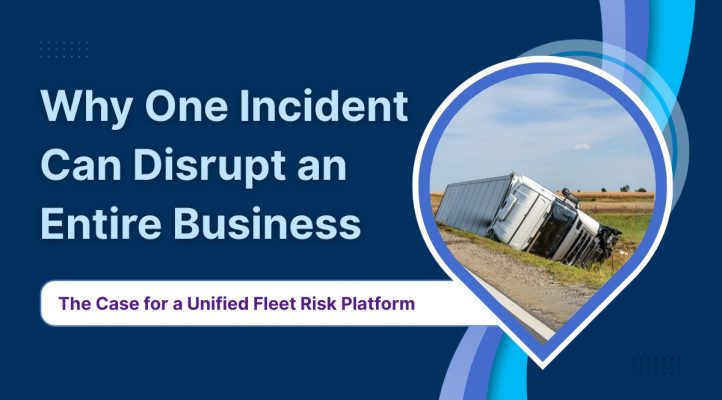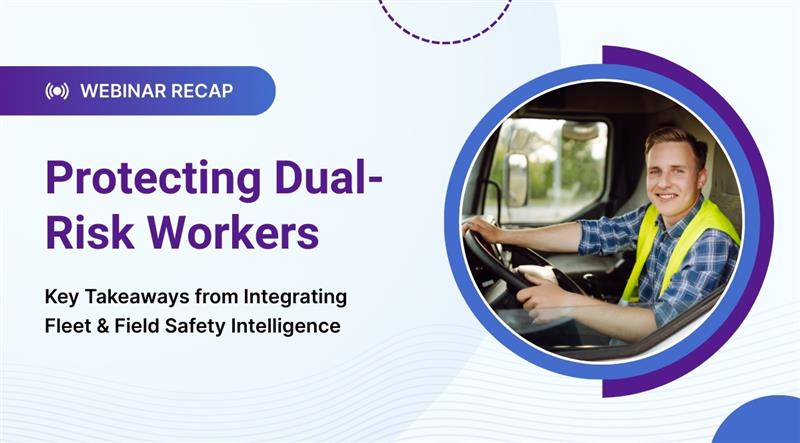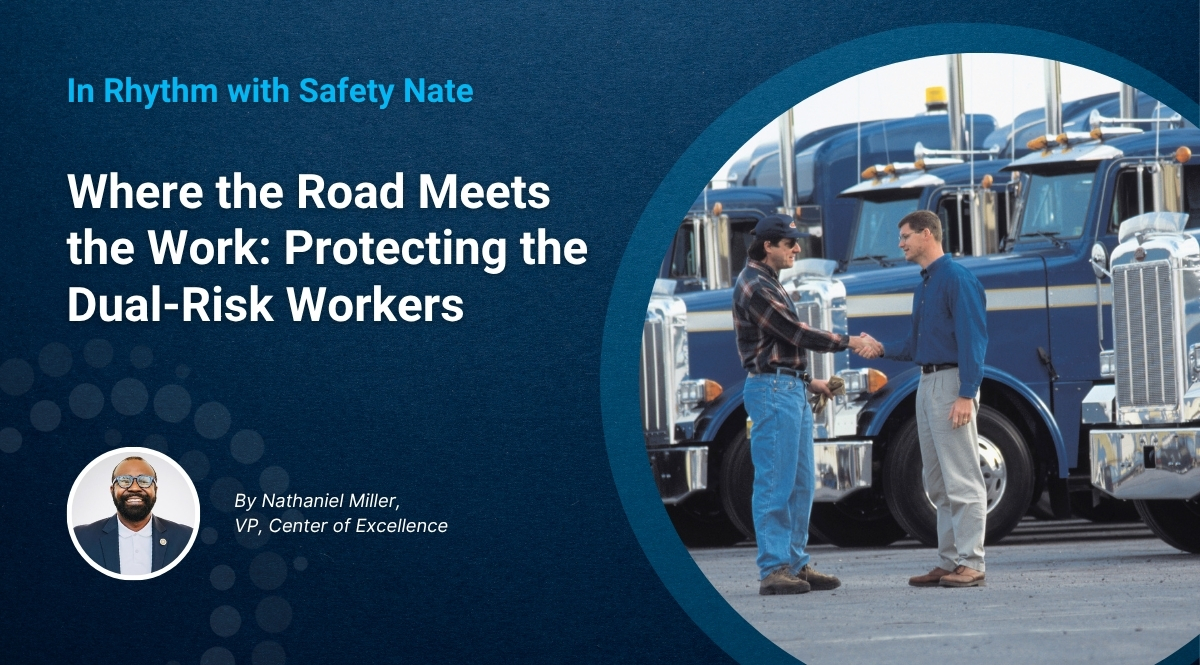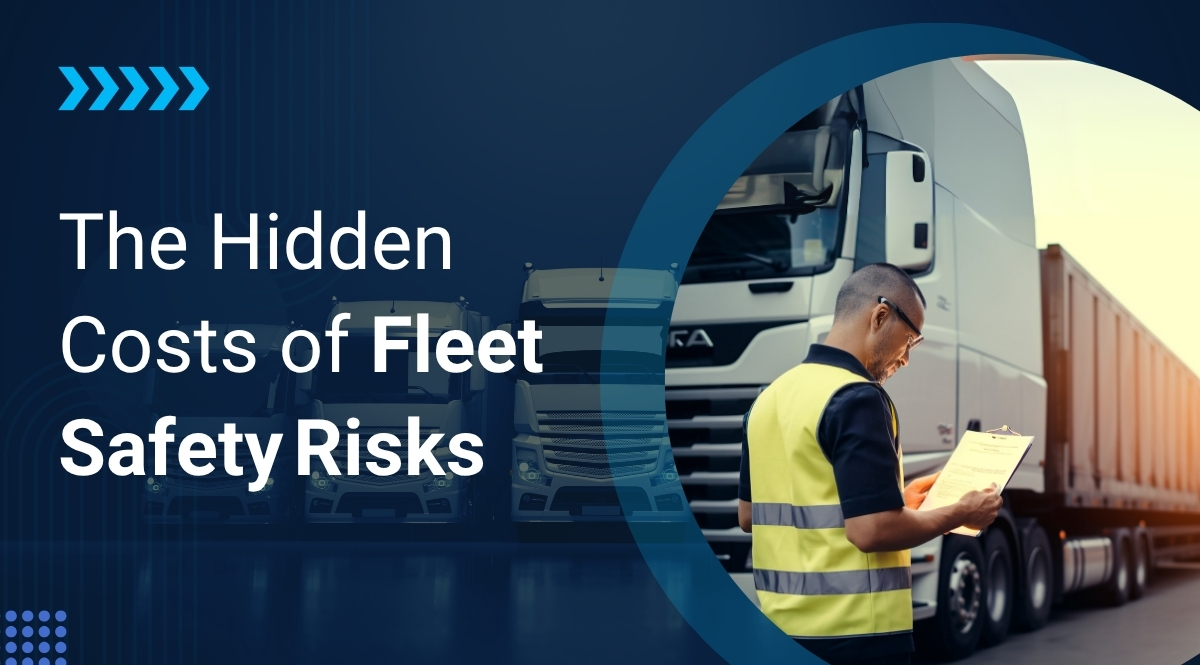Why One Incident Can Disrupt an Entire Business: The Case for a Unified Fleet Risk Platform

In the logistics and transportation world, speed and efficiency are everything. Yet, all it takes is one serious vehicular incident to bring operations to a complete standstill. While some companies view crashes as inevitable costs of doing business, the reality is that a single fleet-related incident can unleash a flurry of negative consequences, from operational downtime and workforce loss to reputational damage and regulatory scrutiny. That’s why we believe that a unified, data-driven approach to fleet risk visibility is no longer optional; it’s essential.
The Domino Effect of a Single Crash
Imagine this: one of your drivers is involved in a serious crash while transporting a critical shipment. No fatalities, thankfully, but the driver sustains injuries, the vehicle is totaled, and the freight is lost. For many companies, this is where the real problems begin.
Downtime and Operational Disruption
Immediately following the crash, the impacted vehicle is taken out of service. The statistics surrounding fleet accidents paint a sobering picture: approximately 20% of commercial fleets will experience an accident in any given year, with each incident bringing significant costs to the organization[1]. If it’s a specialty vehicle or part of a tightly scheduled delivery route, the loss can delay multiple shipments. The incident may also require pulling in spare vehicles or reassigning drivers, if those resources are even available.
Vehicle downtime from accidents significantly impacts business operations, undermining productivity, customer satisfaction, and ultimately profits. For medium to heavy trucks, an average crash costs a staggering $148,279, and that’s just scratching the surface of the total business impact[2]. Now, a single crash has snowballed into delayed deliveries, dissatisfied customers, and supply chain gaps. If you’re operating with tight margins or just-in-time delivery models, the disruption becomes not only inconvenient, but costly.
According to Arnold & Itkin LLC, the average truck accident costs are broken down in detail: basic health and property damage incidents average $334,892, while accidents involving semi-trucks pulling multiple trailers can cost $1.2 million on average. When fatalities occur, the costs skyrocket to $7.2 million per incident[3]

Workforce and Productivity Loss
Injury to a driver doesn’t just affect that one employee; it affects the entire team. The trucking industry already faces a critical shortage of approximately 24,000 professional drivers, costing the freight industry $95.5 million every week in lost revenue[4]. Drivers often form the backbone of a fleet’s operations, and losing one to injury or medical leave means overtime for others, potential burnout, or a hurried search for qualified replacements.
The cost of replacing a single driver ranges from $10,000 to $20,000, while the overall cost of trucking has reached an all-time high of $2.27 per mile. Recent research reveals that 68% of U.S. fleet professionals report that stress negatively impacts driving performance, with 86% believing the risk of driving accidents has increased in the last five years[5]. Worse still, if the crash creates anxiety among the driving team, it can erode morale and prompt others to reconsider their future with the company.
For fleet training and replacement, the financial burden is substantial. A typical fleet of 30-300 vehicles in the U.S. spends approximately $221,400 annually on driver training, considering all related expenses including burden wage rates, third-party learning management systems, and administrative costs[6]. Recruitment, training, and onboarding for new drivers all take time and money, resources that are already strained by the significant incident.
Reputational Damage
In the age of social media and instant news, a fleet accident can quickly become public knowledge. When news breaks of a car accident involving a company vehicle, the court of public opinion often reacts faster than the legal system, leading to rapid erosion of trust even before investigations are concluded. Whether it’s local news coverage, viral dashcam footage, or public court records, customers and partners may question the company’s safety practices.
The operational and financial repercussions extend beyond immediate reputational damage, as lawsuits can disrupt daily operations through investigations, legal proceedings, and settlements that demand time, energy, and resources. As a result, insurance companies may increase premiums or reassess coverage. In fact, in 2023, U.S. trucking fleets saw their insurance premiums per mile jump by 12.5%, rising from roughly $0.088 to $0.099 per mile. This spike marked the steepest year-over-year increase in recent years, driven by a combination of rising liability costs, inflation, and higher-value claims[7]. The reputational hit from a high-profile crash can take years to rebuild—and that’s assuming it doesn’t cost you key contracts in the interim.
Compliance and Legal Consequences
Beyond the operational and public fallout, legal and regulatory scrutiny occurs. A serious crash often triggers a Department of Transportation (DOT) investigation or OSHA inquiry, especially if safety violations or negligence are suspected. A DOT-recordable accident is defined as one involving a commercial motor vehicle that results in either a fatality, personal injury requiring immediate medical attention away from the scene or disabling damage requiring the vehicle to be towed[8].
The rise of “nuclear verdicts,” jury awards exceeding $10 million, has become a growing threat to the trucking industry. According to a report by Marathon Strategies, the trucking industry accounted for approximately 165 million dollars in nuclear verdicts[9]. Between 2006 and 2019, trucking litigation data showed a dramatic increase from 26 cases over $1 million between 2006-2011 to 300 cases over $1 million in the final five years of that period. Recent studies indicate that between June 2020 and April 2023, the average nuclear verdict award reached $27.5 million[10].
According to a 2023 report by Marathon Strategies, the total sum awarded by juries in trucking cases increased dramatically from $10.3 million in 2020 to $65.4 million in 2022, following a brief pandemic-related slowdown[11]. This could lead to fines, audits, or restrictions on operations. In some cases, legal action from victims or their families can follow, tying up your legal team and leadership in court proceedings for months or even years. Motor vehicle crashes cost employers $60 billion annually in medical care, legal expenses, property damage, and lost production alone[12]. The hidden cost? The distraction and redirection of focus from growth initiatives to damage control.
Conclusion
One incident can disrupt an entire business, but with a unified fleet risk platform, organizations can minimize operational, financial, and reputational fallout. That is why we believe that proactive risk management is not just about compliance: it’s about safeguarding your people, your brand, and your bottom line.
References
- Soaring Nuclear Verdicts in Trucking Industry | Tank Transport
- What is a DOT Recordable Accident? | TruckSafe
- ATRI Research: Industry Costs Increased Over 6% During Freight Recession | Trucking Research
- Fleet Coaching ROI & Safety Data | Predictive Coach
- Geotab Safety Report – PDF
- Truck Driver Shortage Costs Freight Industry $95.5M/Week | TruckDriversUS
- Average Cost of Commercial Vehicle Accidents | Arnold & Itkin
- Hidden Costs of Fleet Accidents | Motive
- Fleet Safety Metrics Reversing Negatively | Automotive Fleet
- Nuclear Trucking Verdicts | Marsh MMA
- Corporate Verdicts Go Thermonuclear – 2024 Report | Marathon Strategies
- Motor Vehicle Safety Guide | OSHA




